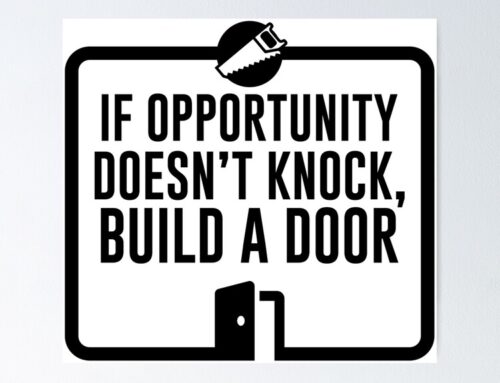10 Steps to Building a Relationship Sales Force

Do you sometimes dream of having your own sales force? Imagine if you were able to make the investment, lay the groundwork, and have a team of well-trained salespeople bringing in new clients?
For most of us, that’s a pipedream. It may not even make sense for the size of business that we want. And, there’s no doubt that a team of people doing the sales and bringing in new business would have a huge impact on your bottom-line.
Fill Your Pipeline through Business Relationships
The good news is that you can have your own sales team by utilizing our local business community to bring you referrals and opportunities. Even though referral sources will not always bring closed sales to you, they can fill your pipeline with quality prospects who are ready to do business with you.
So, what does it take to build a sales team? I looked up the process of building a team of salespeople that you might hire, and it’s remarkably similar to what we would do for relationship sales.
Step 1: Ask for help.
Entrepreneurs are notorious for avoiding the “H” word. If you aren’t using to asking for help, then you are just hoping that others will do things for you. Remember, if people didn’t ask for help, you wouldn’t have any clients to help, either.
Step 2: Do your research.
Most people I’ve met in business know how to introduce themselves and make connections. However, most aren’t aware that there are excellent books on building business relationships, developing sales pipelines, and creating referral plans. The World’s Best Known Marketing Secret by Ivan Misner & Mike Macedonio is our go-to book for Asentiv.
Step 3: Have a good hiring process.
Finding referral sources is like hiring. Would you walk into a room of candidates to hire and declare “You are all hired, now go out and sell for me!” or would you hand-select your team and train them on what makes a good sale for you?
If you expect a consistent flow of referrals and plan to give in return, you’ll need to have motivation on both sides. In relationships, that means shared values, interests, and clear expectations.
Step 4: Fire fast.
For those with employees, this step makes sense. With relationships, we also sometimes have to let go when it isn’t working for us. You might make a great friend in your business and spend a lot of time with them, and then come to find that it’s not helping your business. You can “fire” that person by moving them to your social calendar and leaving your business time to those that will bring business to you. The question is, do you have a process to evaluate your relationship and know when to make the shift? If not, you’ll need step 5 and 6.
Step 5: Have tracking tools.
Having 12 to 15 strong referral sources means knowing a lot about these people. Because the people in your network will change from time to time, keeping all that information in your head won’t work. You’ll want to keep track of meetings and anything you promised. By having a tracking tool that reflects how you organize information, you can easily evaluate relationships. You’ll also be able to determine the value of the relationship to both of you.
Step 6: Use sales metrics.
What gets measured gets done. At Asentiv, we use a giving activity tracking tool we call the “Networking Scorecard.” Using this tool to track your weekly networking activities, you can determine if the results are paying off. You’ll also know what areas are good to focus on to get even greater results.
Step 7: Plan a 4-month ramp up.
A sales team must be trained, and training takes time. Then there’s time to gain experience. Salespeople have to learn the inside and out of what they sell and who they sell to. Training may take several months, and productivity will be limited in that time.
It is no different with relationship sales. Your referral sources need time to develop trust with you, learn what makes a good referral for you, and integrate you into their own systems. Many business owners give up on relationships too soon. They return to direct prospecting because they don’t have a plan and strategies to find and equip their referral sources.
Step 8: Reward your people.
Salespeople work off commission and salary. When referring business, your referral sources aren’t expecting to be paid. They are expecting to be recognized for their contribution to your business. Do you have a system for rewarding people? Start with a simple thank you card and work up to complex reward using your network. The people referring you will stop if they aren’t acknowledged for their effort on your behalf.
Step 9: Communicate frequently.
Sales staff who don’t see the boss will slowly lose productivity. Because they don’t get the answers they need, so they slow down the process. Business relationships also don’t work on cruise control. In practice, a true power team has regular and effective conversations about how to help each other.
Step 10: Go all out with sales training.
The better trained your relationship sales staff, the more they will produce. Those skills reflect on your bottom line, just as the skills of a football defensive line reflects the ability of a quarterback to score.
And, the same applies to relationship sales. You may have the best skills in referring, and your teammates need those skills, too. Because without them, your teammates will be unable meet your expectations.
Article by

206-391-5682
i2i@i2idirectmarketing.com
www.i2idirectmarketing.com
“…all deliveries GPS tracked…”




